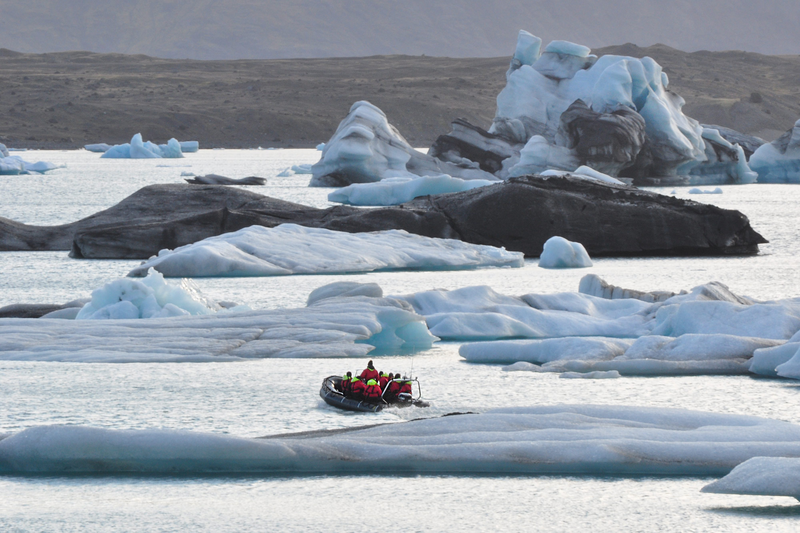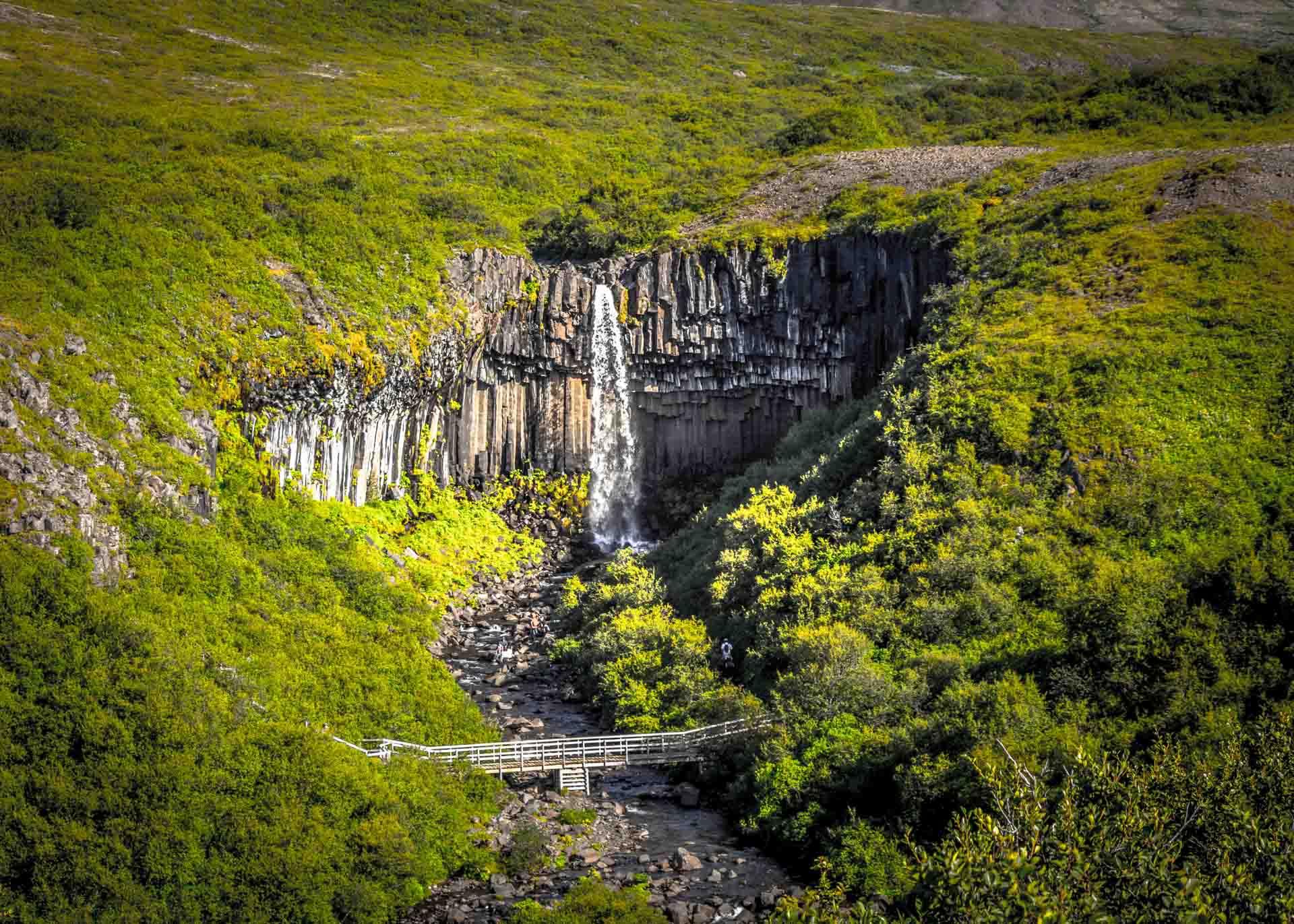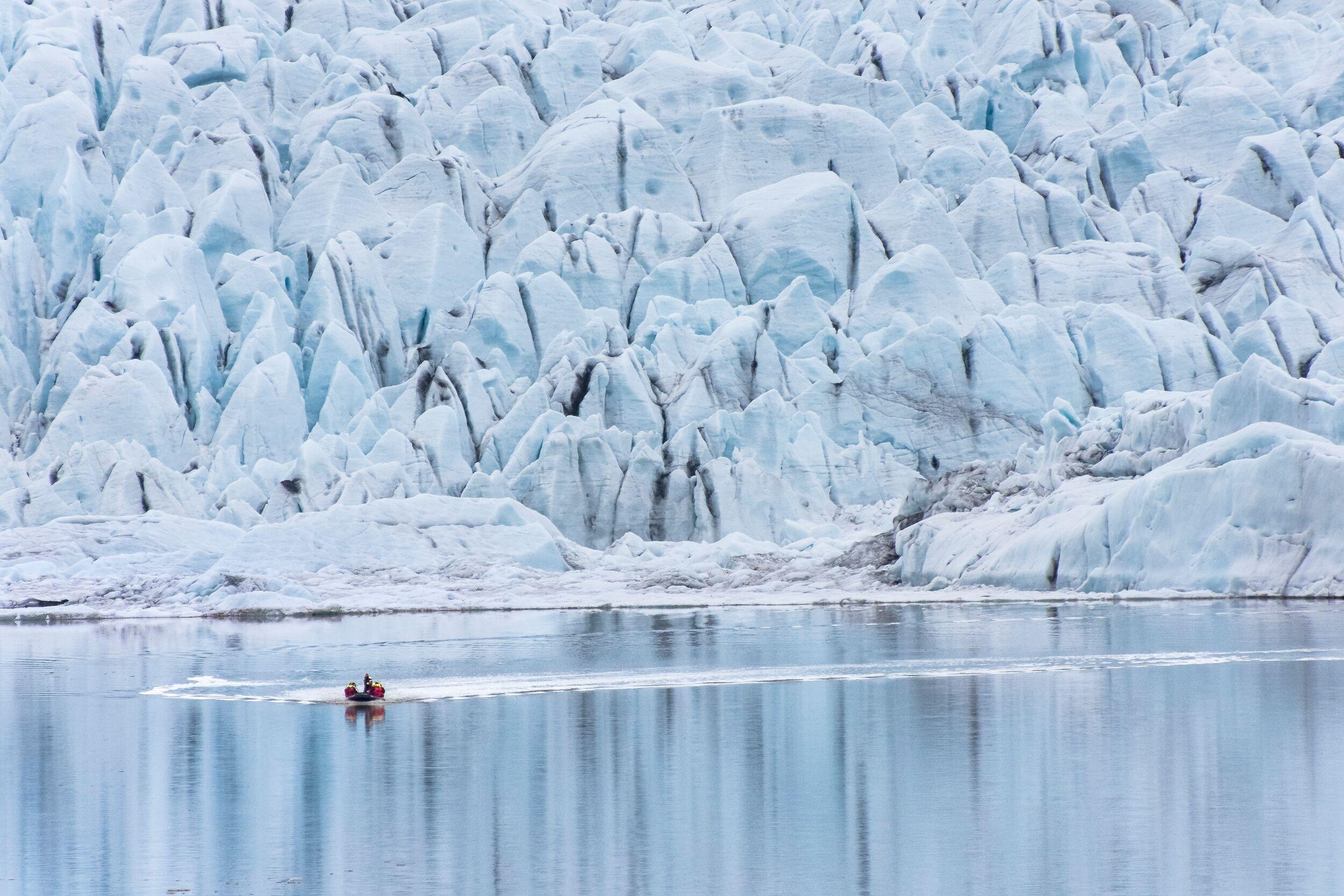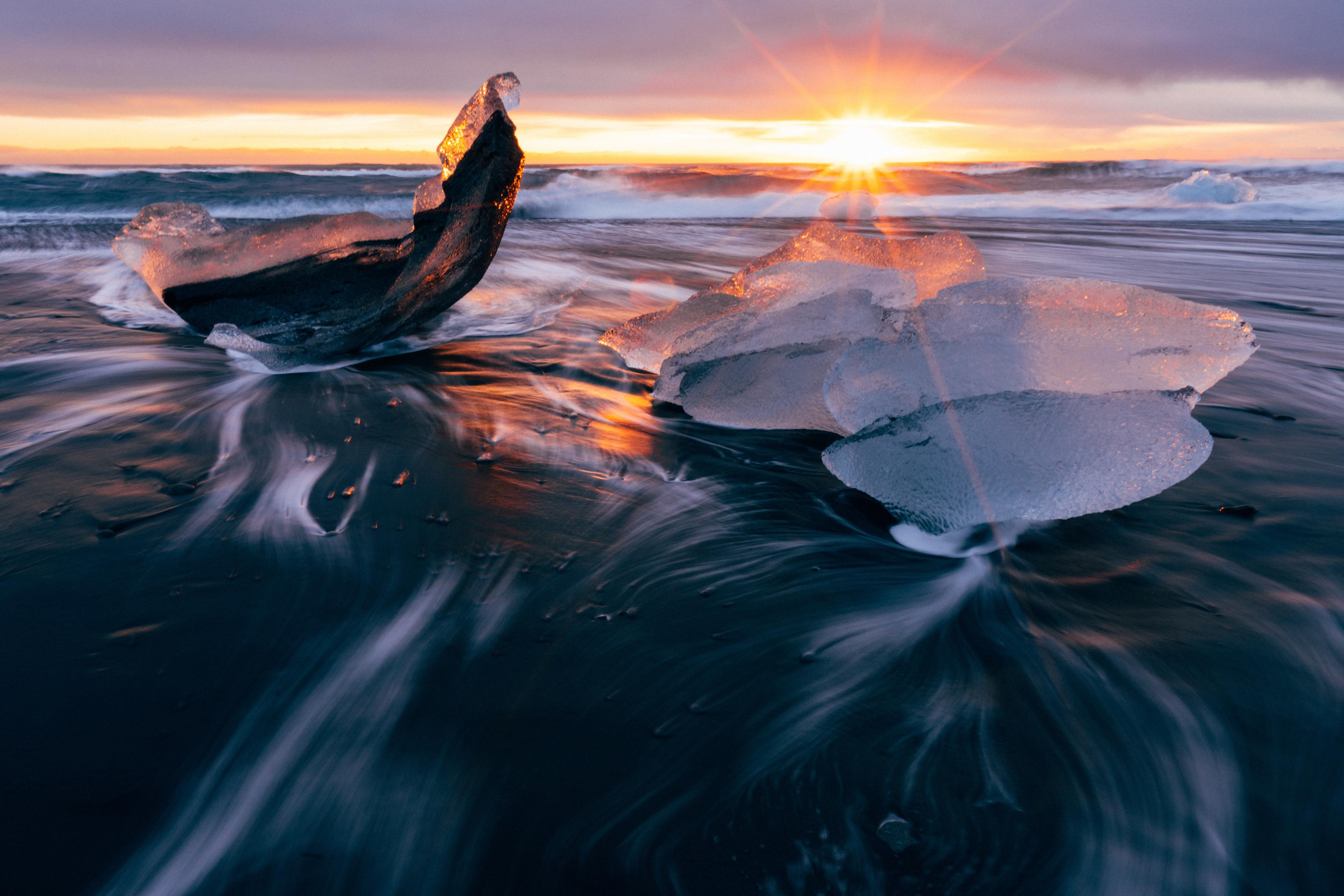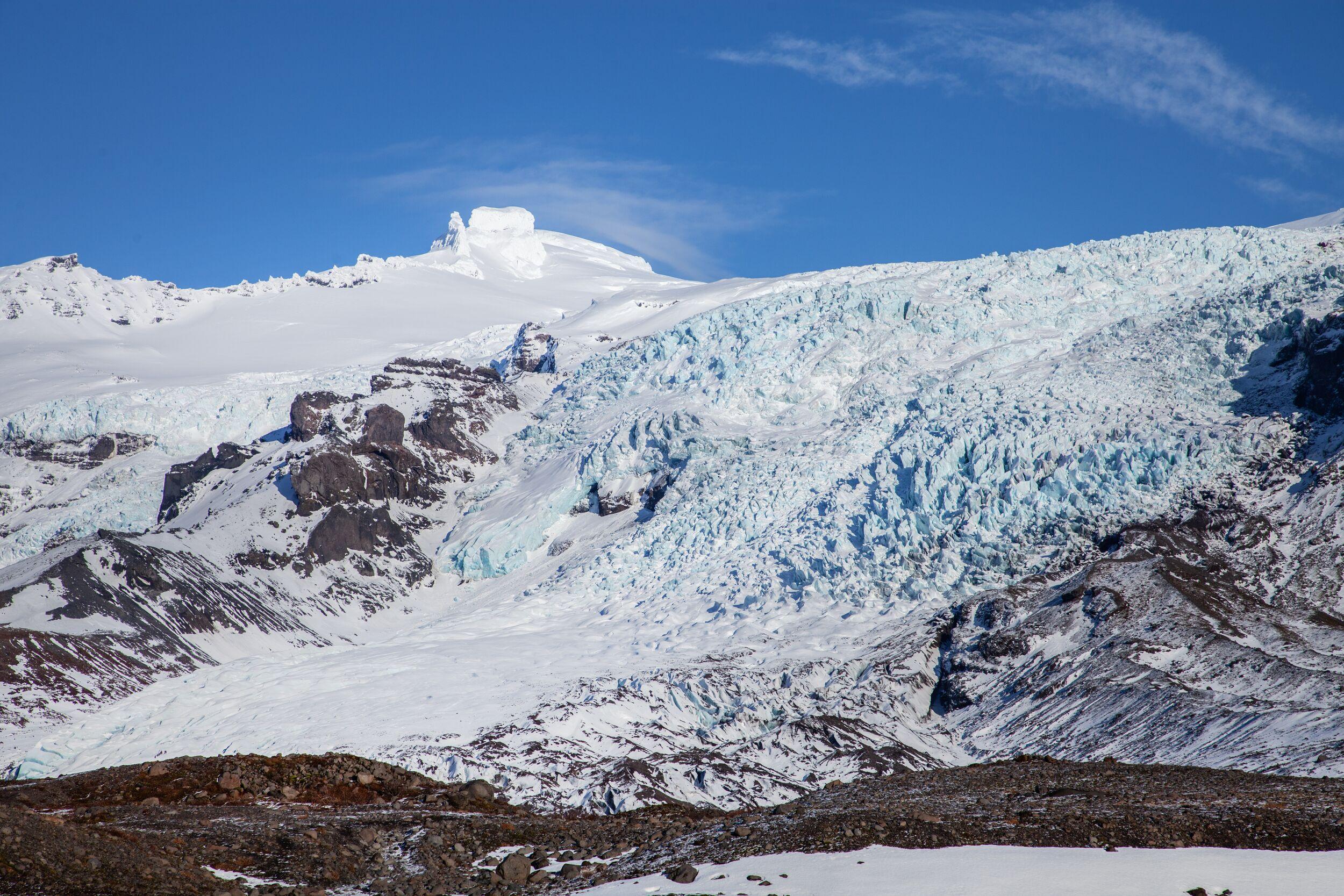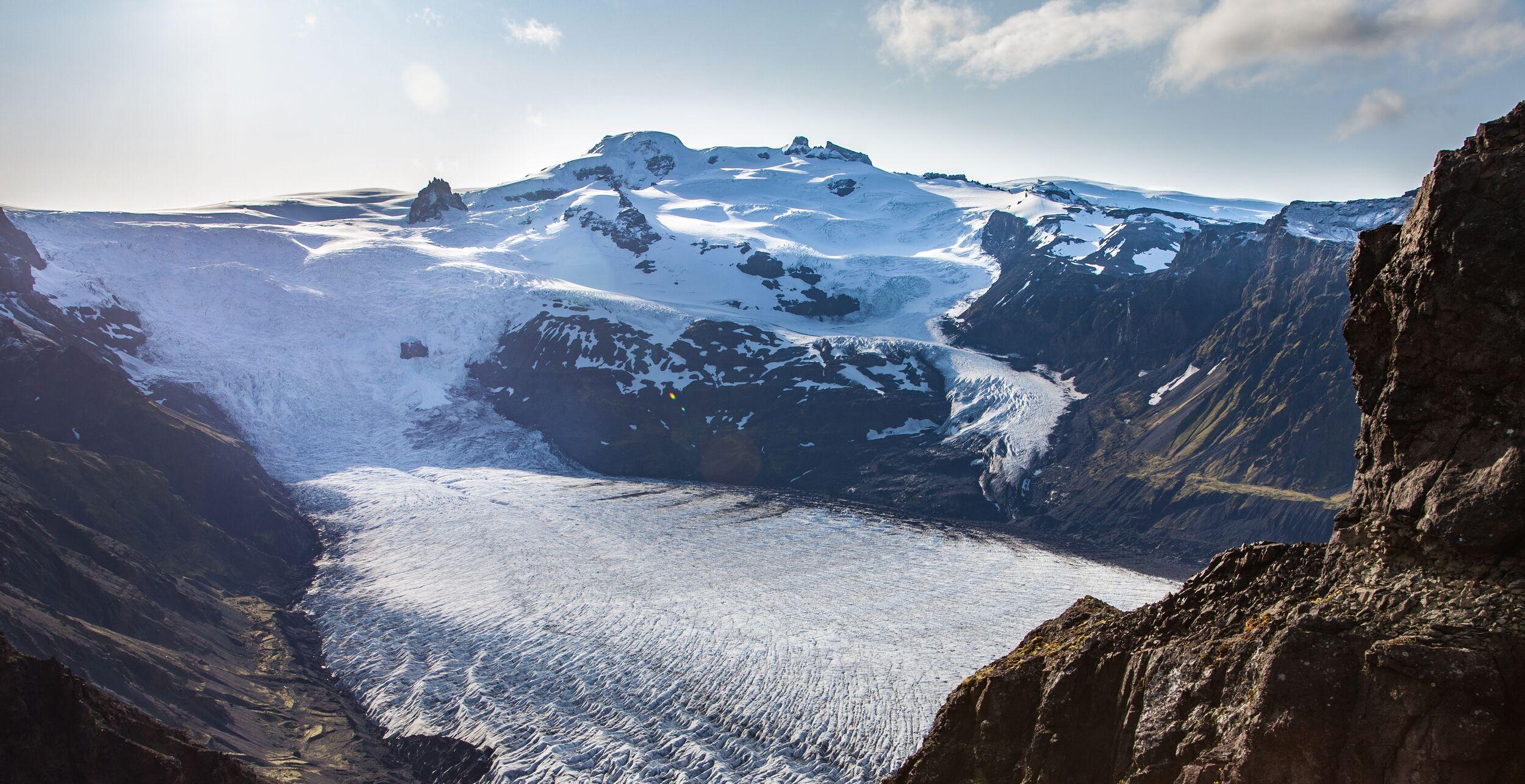
- Best time to visit
- All year round
- Distance from Reykjavík
- 330 km (205 mi)
- Coodrinates
- 64.078539, -16.981396
Exploring Vatnajökull National Park
History of Vatnajökull
The formation of Vatnajökull glacier as we know it today pre-dates settlers in Iceland. Around 1,500 years ago, this vast ice cap was formed by the coalescence of several smaller glaciers from high in the mountains. So when settlers arrived around 870 AD, Vatnajökull had already been formed.
Combined, the ancient glaciers covered a huge swathe of land and today Vatnajökull glacier is between 8,100 and 8,300 square kilometres in size. It’s almost impossible to declare the exact size of Vatnajökull at any one time as its outlet glaciers move slowly every year – creeping forward by around one metre a day over the summer months.
In June 2008, Vatnajökull National Park was officially established, covering the glacier and surrounding area, including Jökulsárgljúfur and Skaftafell.
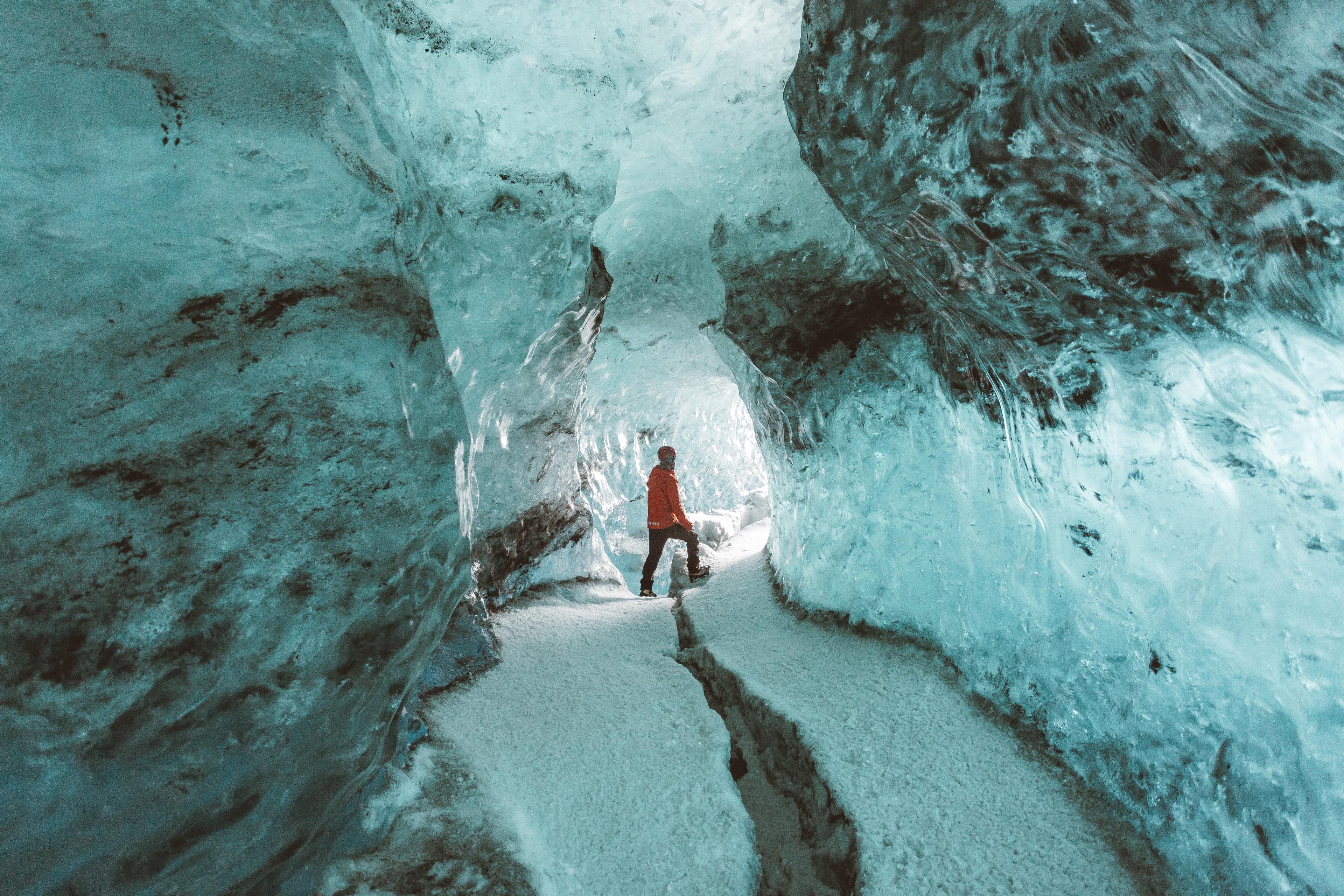
What to See and Do in Vatnajökull National Park
As Vatnajökull National Park is so big, there are loads of things to see and do. It’s all about outdoor adventures here. At Skaftafell, long hiking trails snake across the landscape and, you can hike to glacier viewpoints and the beautiful cascade of Svartifoss waterfall.
Get up close and personal with Vatnajökull glacier by joining a guided glacier walk on one of the many outlets. In winter, there’s a chance to explore natural ice caves. Vatnajökull ice caves allow you to see the sleek blue world inside an ice cap.
The only way to experience a glacier hike is on an organised excursion with a professional guide who will help you with the essential equipment and point out a path that avoids hidden ravines and sinkholes in the ice. You can even try skiing and ice climbing on Vatnajökull glacier under the guidance of a professional.
For a real challenge, there’s the opportunity to climb Iceland’s tallest peak in Vatnajökull National Park. Hvannadalshnjúkur stands at 2,110 metres above sea level and from the top, you’ve got a panorama of the ice caps and mountains that make up the national park. Guided expeditions leave from Skaftafell and take around fifteen hours from start to finish. Due to the length of the hike, it is only possible in the middle of summer when the long hours of daylight mean you don’t have to descend in the dark.
Within the national park, you’ll also find Jökulsárlón glacier lagoon where glowing blue icebergs float in the calm water. Boat tours leave from the shore, allowing you to get close enough to touch an iceberg and perhaps even hear the crack of ice breaking off from the glacier to float away in the lagoon. Just across the road, the black-sand Diamond Beach is a photographer’s dream. Crystal-clear ice litters the shore, sparkling in the sunlight.
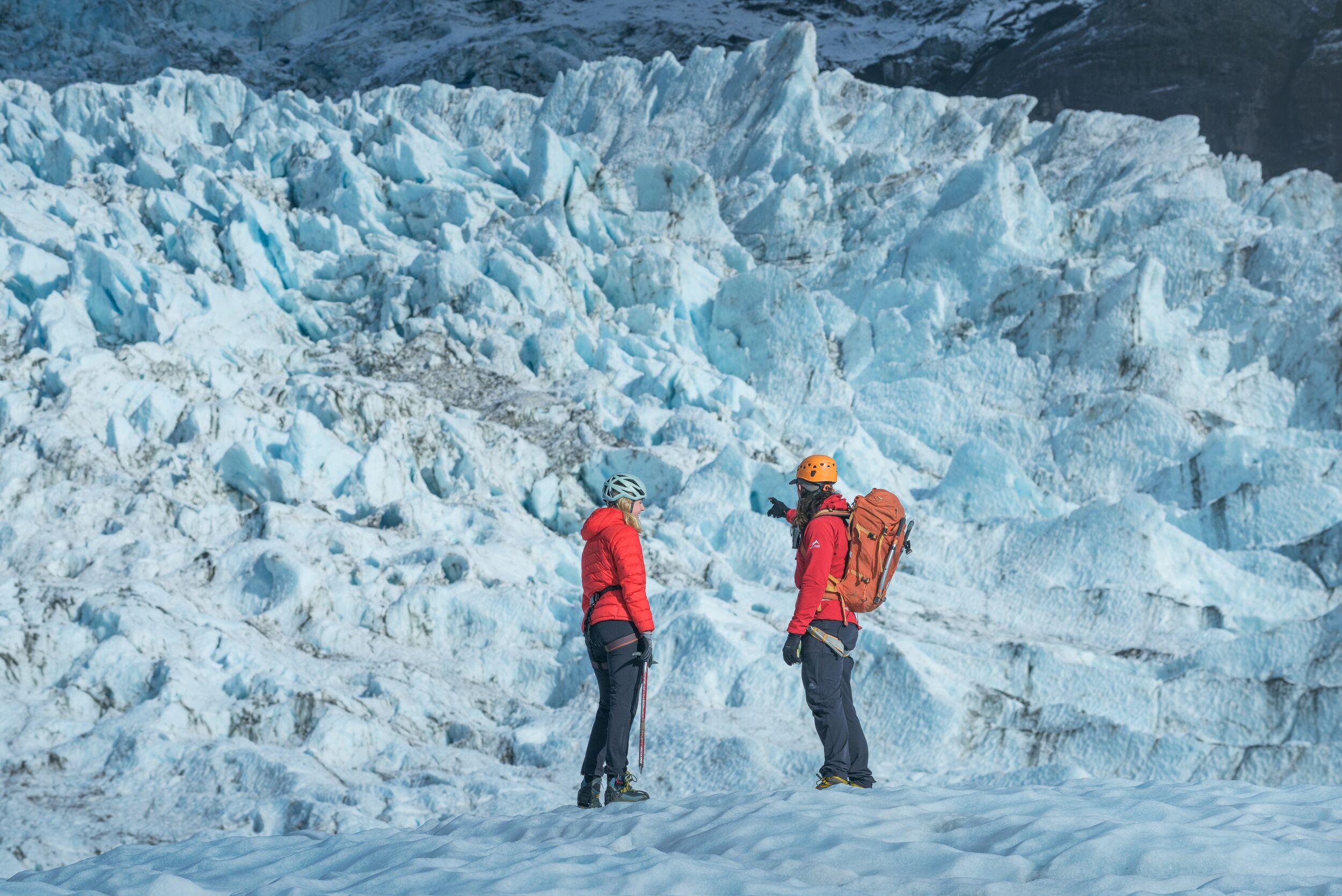
The Area Around Vatnajökull National Park
Outside the national park, you’ve got a few accommodation options in the small settlements along the Route One road that runs along the south coast. You’ll find family-run guesthouses within isolated farmsteads and a handful of hostels, hotels and a campsite or two in the villages of Hof and Kirkjubæjarklaustur.
Most organised tours from Reykjavík to Vatnajökull are multi-day affairs as it takes nearly the whole day to drive from the capital, and there’s no way you want to miss the sights of the south coast along the way.
Most tours to Vatnajökull stop at some famous natural attractions on the South Coast, such as the black-sand beach of Reynisfjara, allowing travellers to stretch their legs while taking in some of Iceland’s unique scenery.
Seljalandsfoss waterfall is not to be missed either – where you can walk behind the cascade of water and admire the landscape beyond. And Skógafoss attracts the crowds with its rainbows dancing in the mist and easy hike up to the viewing point.
Organised tours to Vatnajökull already have these stops built in, so you don’t have to worry about missing out on anything along the way.
All About Vatnajökull National Park
In summer, you’ll see the most crowds in Vatnajökull National Park, but this is the best time of year to visit. Some activities, such as hiking Iceland’s tallest peak, are limited to summer only and glacier hikes operate year-round with clearer days for a better view in summer. However, if visiting a natural ice cave is the one thing on your bucket list, it is best to visit in winter as ice caves are often inaccessible due to meltwater in summer. The shoulder months of May or September are a good option if you still want to take advantage of the long hours of daylight but avoid the biggest crowds.
Vatnajökull ice cap is one of the most popular spots in Iceland for glacier hikes. Guided walks run from several different places and take place on a few different glacial outlets, so you can choose a tour depending on what you want to see – ice caves, chasms, or a view from the top. As the frozen surface of Iceland’s glaciers can hide ravines and sinkholes, the only way to experience hiking on an ice cap is by joining an organised, guided tour. Equipment such as helmets, ice picks and crampons are provided for you.
Vatnajökull is a huge ice cap that covers a vast area of Iceland’s mainland. It is mainly in the southeast of the island, but the boundaries of the national park stretch as far as the centre of Iceland. Its southern border sits just off the Route One ring road that loops around the island.
If you’re taking a glacier hike on Vatnajökull, you’ll want to bring layers no matter the time of year. The beginning of the hike can be cold with a chill wind whipping off the ice, so you’ll want a fleece or woolly jumper to keep warm. As you walk upwards, it can get a lot warmer. Sturdy walking boots that can fit crampons are essential and a woolly hat that can fit under a helmet is a good idea – especially in winter – along with insulated gloves. A waterproof jacket can keep the biting wind at bay, but once you’ve started the hike, you’ll soon warm up, especially if the sun is shining. You’ll be peeling off layers as you climb, which is why layering up at the bottom is essential.
There are a number of points along the southern coast Route One road where you can turn off to access Vatnajökull. The most popular point to enter the national park from is Skaftafell, which lies 230 kilometres (around 143 miles) from Reykjavík – around a four-and-a-half-hour drive. Some visitors access Vatnajökull glacier from Jökulsárlón glacier lagoon, which sits along the south coast, 380 kilometres (around 236 miles) from Reykjavík – approximately five hour’s drive.
Since it is so far from Reykjavík and takes nearly a full day of driving to reach Vatnajökull, most people opt to stay the night in the area. There are several family-run guesthouses on farms along the Route One road that offer accommodation near Vatnajökull. In peak season, it is essential to book in advance as the area is very sparse. There are a few options, including hostels and campsites, around Skaftafell and the biggest selection of accommodation can be found in the small village of Höfn.
While some Icelandic words are difficult to pronounce, Vatnajökull is one of the easier ones. “Vatna” is pronounced just as you read it. And “jökull” has a soft j, like a ‘y’ sound. The ö is probably the most difficult for a non-Icelandic tongue – it sounds somewhere between o and e. It mimics the sound of yeux (eyes) and oeuff (egg) in French.
Quite simply, Vatnajökull means water glacier. Vatn is water and jökull means glacier. It is rumoured to be named after the sub-glacial lakes that exist beneath the surface.
Vatnajökull covers so much land that how long you spend here depends on the activities you have planned. If you’re embarking on a guided glacier hike, you should allow up to four hours for the experience. Skaftafell has hiking trails that range from an hour and a half to five hours. If you’re taking a boat trip on Jökulsárlón glacier lake, allow between two and three hours here. And if you’re looking to hike up Hvannadalshnjúkur, you’ll need to dedicate the entire day to the activity – it takes around fifteen hours.
Within the vast expanse of Vatnajökull National Park, you can choose from many outdoor activities. Hikers can hit the numerous trails past Skaftafell’s rugged scenery, while those that like to experience Iceland’s unique landscape at a more leisurely pace can take a boat trip onto Jökulsárlón glacier lake to spot icebergs floating in the water. Guided glacier walks take place on Vatnajökull’s many subsidiary glaciers, some even including ice cave exploration. Then there are the pretty waterfalls within the national park – Svartifoss and Aldeyjarfoss being the highlights. For the absolute hiking challenge, you can climb Iceland’s highest peak in a single day and get an unparalleled view of the entire national park.
Between 1000 and 1500 years ago, Vatnajökull as we know it now was formed by several glaciers combining together to make Iceland’s largest ice cap. It plugs one of the island’s most active volcano systems. Vatnajökull has around 30 outlet glaciers that flow slowly through ravines and valleys and the shape of the outlet glaciers is constantly changing as they creep forward by around one metre a day in summer.
To reach the Skaftafell or Jökulsárlón access points to Vatnajökull National Park, all you need to do is follow the Route One main road from Reykjavík, taking you along the south coast of the island. 230 kilometres later, you’ll find the turn-off for Skaftafell, or carry on driving for a further 57 kilometres to reach Jökulsárlón glacier lagoon. As the drive is so long, many people choose to join an organised tour from Reykjavík to experience the highlights of Vatnajökull National Park. It takes the hassle out of navigating, driving for long stretches and choosing where to stop and stretch your legs along the way. With a professional guide and driver, all you have to do is look out the window and watch the beautiful scenery go by.
Related tours
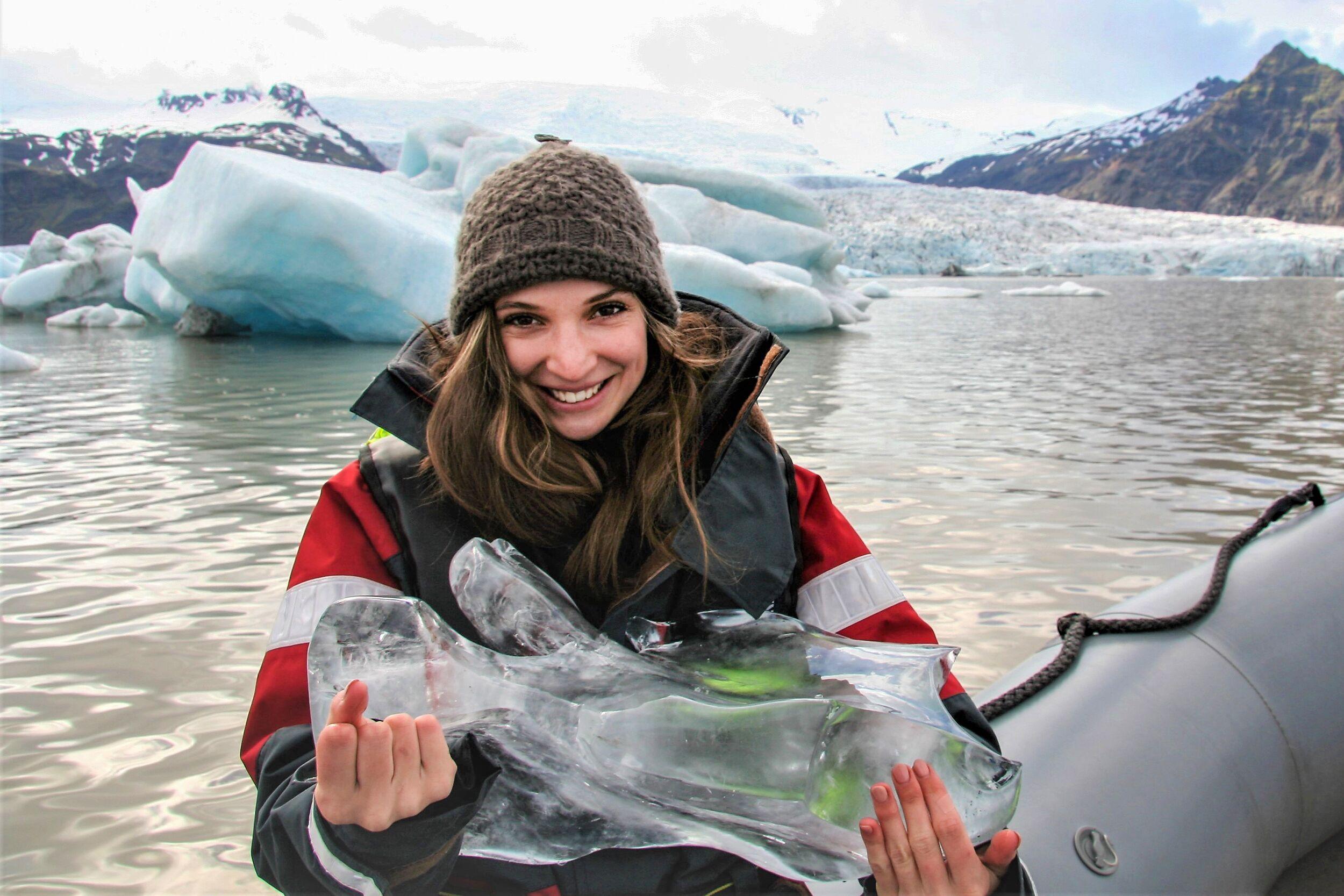
Blue Ice Experience and Fjallsárlón Iceberg Lagoon
Take your Iceland self-drive adventure to the next level with this combo tour on a beautiful outlet glacier and a boat ride along a stunning lagoon. Experience the beauty of Iceland’s mighty glaciers on foot and in water. Expect an easy tour with a 3.5-hour guided glacier hike and a 1.5-hour scenic boat ride on the Fjallsárlón Glacier Lagoon.
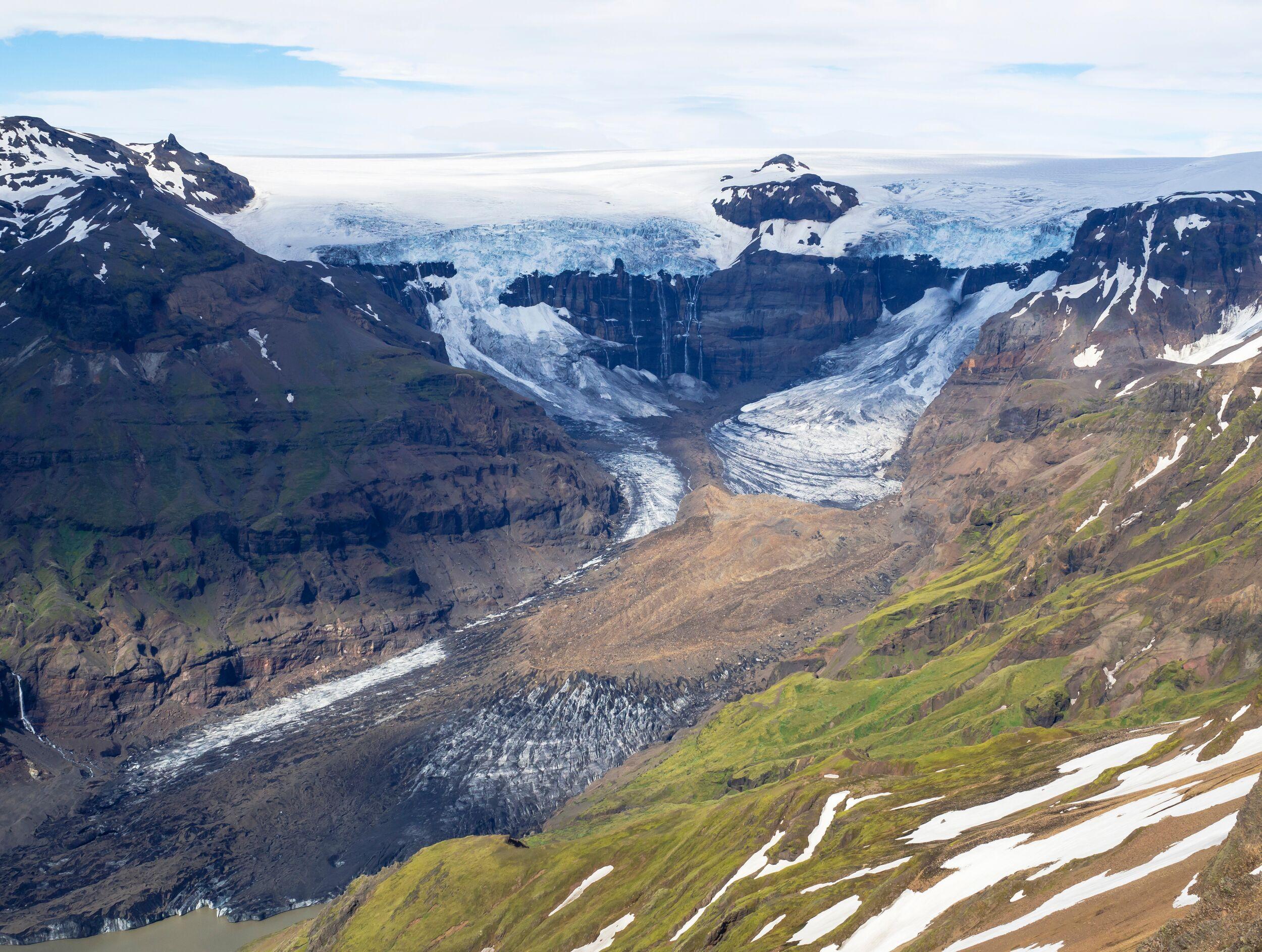
Skaftafell Panorama Hike
Experience one of Iceland's most rewarding trails on this full-day guided hike through rugged mountain terrain and alpine landscapes. Famously known for offering the most epic views over the outlet glaciers of Vatnajökull, this route is ideal for experienced hikers seeking a true highland adventure and mind-blowing scenery.
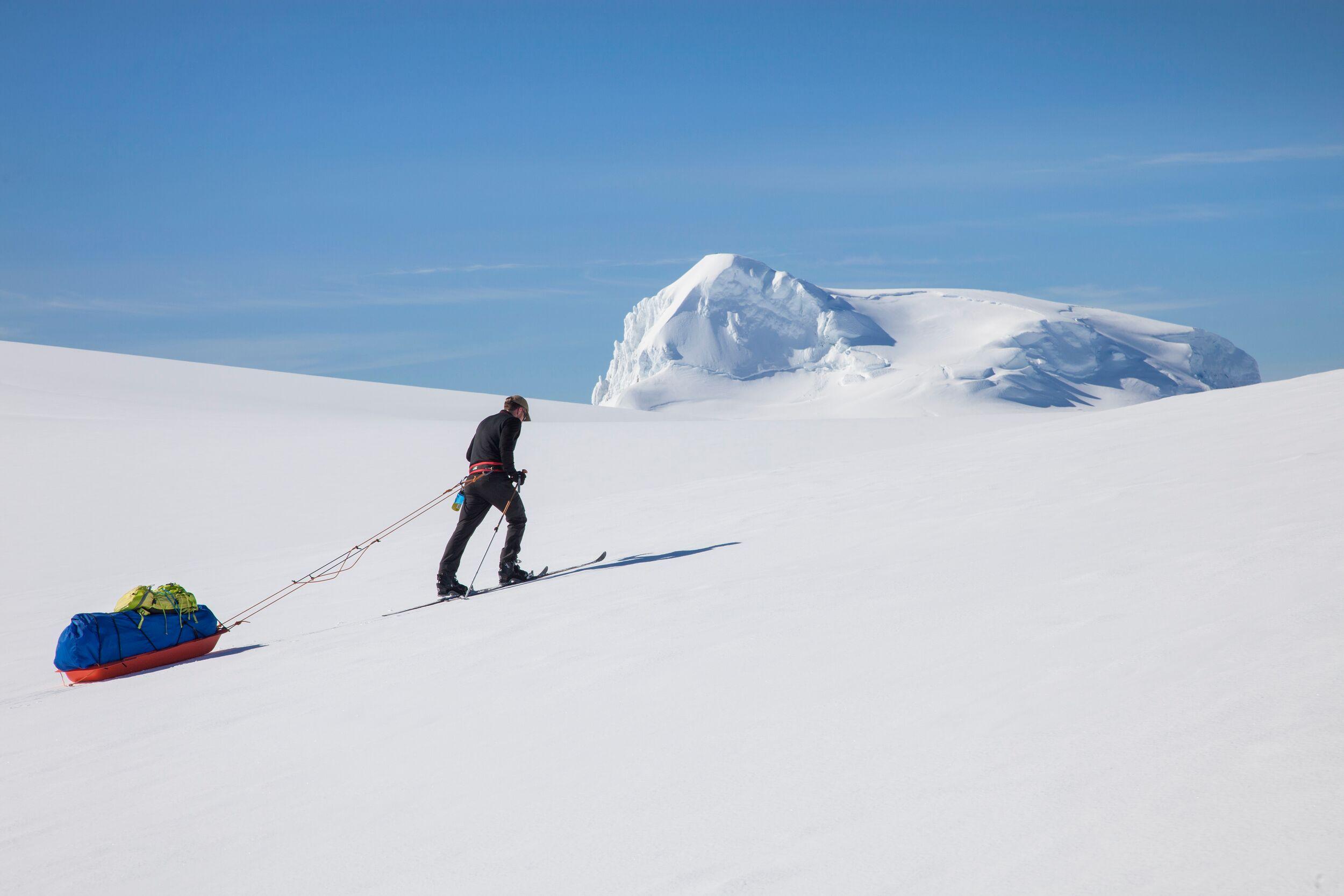
Vatnajökull Glacier Expedition
Cross the largest glacier in Europe during this perfect combination of adventure, stunning nature and physical challenge. This is a dream tour for outdoor enthusiasts! Crossing the mighty Vatnajökull ice cap should be on the list for every ambitious adventurer.
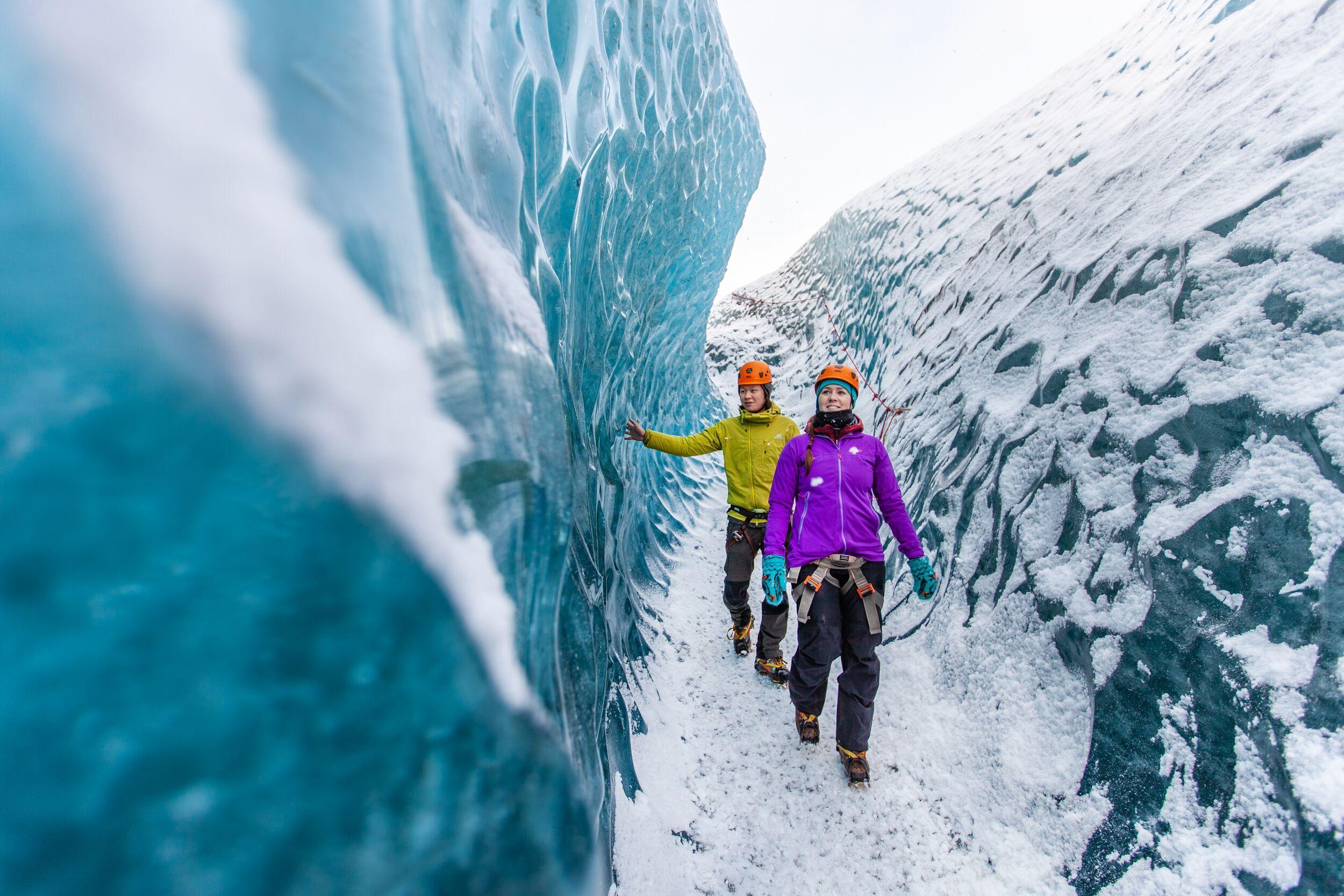
- Winter Offer
Blue Ice Experience - 3.5-hour Skaftafell Glacier Hike
Explore a stunning outlet glacier in Skaftafell during this easy glacier walk. Marvel at this icy giant, a breathtaking outlet glacier that extends from the vast Vatnajökull Glacier, the largest in Europe. Get ready for an adventure against a backdrop of glacial ice! Enjoy 15% off this tour when booking between 1 October – 31 January for travel from 1 November – 31 January.


